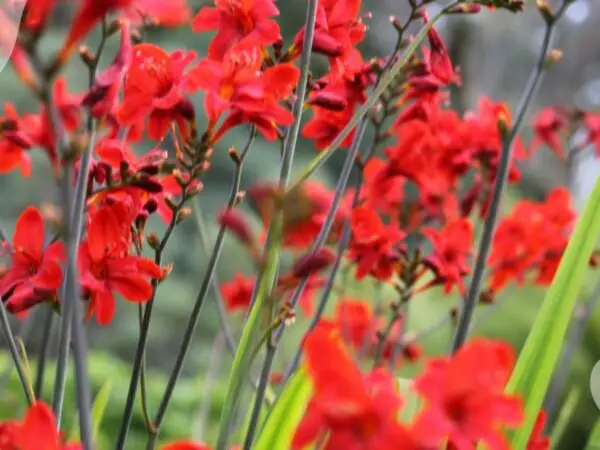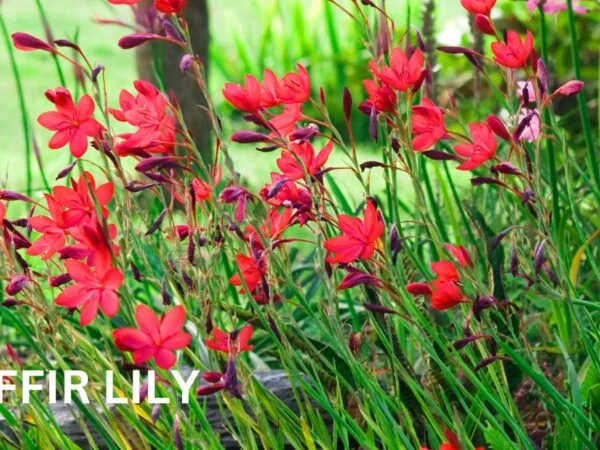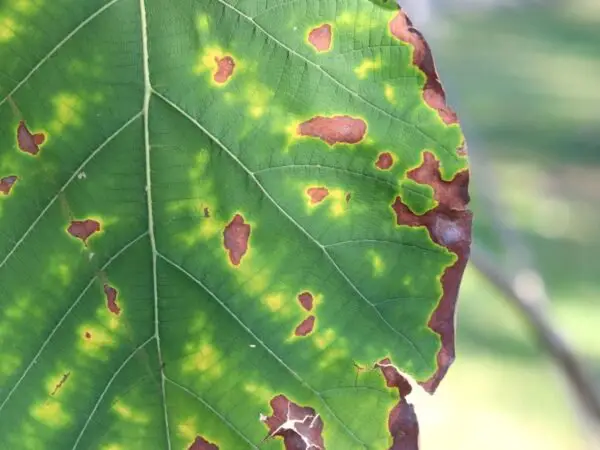Sycamore trees, known for their majestic presence and distinctive bark, thrive in specific environments. Understanding where sycamores grow best involves exploring historical contexts and geographical factors that influence their growth patterns. These resilient trees have a rich history intertwined with ancient civilizations like the Egyptians and Greeks, adding to their allure.
Today, sycamores flourish in regions with moist soil near rivers or streams, providing them with the necessary water supply for optimal growth. By delving into these ideal habitats for sycamore trees, we can uncover the secrets behind their flourishing existence amidst diverse landscapes.
Key Takeaways
- Choose the Right Location: Plant sycamore trees in moist, well-drained soils with full sunlight for optimal growth.
- Select Suitable Varieties: Consider the specific characteristics of different sycamore tree varieties to find one that best suits your needs and climate.
- Plant Carefully: When planting sycamore trees, ensure proper spacing, depth, and watering to promote healthy root development.
- Provide Adequate Care: Regularly water, fertilize, and prune your sycamore tree to maintain its health and appearance.
- Prepare for Winter: Take necessary precautions to protect sycamore trees during winter months to prevent cold damage.
- Explore Propagation Techniques: Experiment with seed germination or stem cuttings to propagate new sycamore trees for your garden.
Ideal Growing Conditions
Light Requirements
Sycamore trees flourish in full sun, needing a minimum of 6 hours of direct sunlight daily. They can handle some shade but avoid excessive shady spots.
Sycamores are versatile shade trees and can adapt to various soil types like clay, loam, and sandy soils. The ideal soil should be well-draining with a neutral to slightly acidic pH level.
Watering Tips
When young, sycamore trees require consistent watering until they establish themselves firmly. During dry periods, water deeply once a week to maintain moisture levels without overwatering and risking root rot.
In USDA zones 4 to 9, sycamore trees thrive due to their hardiness against different temperature ranges from hot summers to cold winters. While they prefer moderate humidity levels, they can also tolerate drier conditions well.
Sycamore Tree Varieties
Different Types
Sycamore trees come in various species, such as the American sycamore (Platanus occidentalis) and the London plane tree (Platanus x acerifolia). Each type has its distinct characteristics and growth patterns. For instance, the American sycamore is known for its massive size and ability to thrive in moist soils, making it an excellent choice for areas with abundant water sources.
When choosing a sycamore tree variety that suits your environment, consider factors like climate and landscape. The London plane tree, a hybrid of American sycamores and Oriental planes, offers resilience against urban conditions like pollution and compacted soil. Understanding these differences can help you select the ideal shade tree for your specific location.
Planting Sycamore Trees
Best Time to Plant
Plant sycamore trees thrive when planted in early spring or fall. These seasons offer optimal conditions for root establishment before facing harsh weather. Avoid planting during summer's high temperatures, which can stress the tree.
The best time to plant sycamores is crucial for their survival and growth. By choosing early spring or fall, you give the tree a head start to develop a robust root system. This ensures better resilience against extreme conditions like winter cold or summer heat.
Planting Process
When planting sycamore trees, dig a hole twice as wide as the root ball but slightly shallower than its depth. This allows room for sycamore tree roots to spread out comfortably underground. Ensure the tree stands straight in the hole before backfilling with soil.
To successfully plant a sycamore tree, follow these steps diligently: Dig a spacious hole that accommodates the root ball without crowding it; gently place the tree ensuring it remains upright; then fill in with soil, compacting it gently around the roots for stability and proper anchoring.
Caring for Your Sycamore Tree
Fertilizing
Sycamore trees thrive when provided with the right nutrients. A balanced slow-release fertilizer is ideal for these majestic trees. Look for fertilizers with an NPK ratio of 10-10-10 or similar, ensuring a good mix of essential elements without overloading on nitrogen, which can harm the tree.
. Following the manufacturer's instructions regarding application rates is crucial for optimal tree health. It's important to avoid fertilizing during periods of drought or extreme heat to prevent stress on the tree.
Pruning Guidelines
Pruning sycamore trees is vital for their overall health and appearance. Late winter or early spring, when the tree is dormant, is the recommended time for pruning these beauties. This helps prevent stress and sap bleeding that can occur if sycamore tree pruned during active growth periods.
Using clean and sharp pruning tools ensures precise cuts when trimming sycamores. When pruning, remember to cut back to a lateral branch or bud to stimulate new growth effectively while maintaining a balanced shape by removing overcrowded branches will help your tree flourish beautifully in its environment.
Overwintering Sycamore Trees
Ensuring they survive the winter is crucial. Protecting young sycamores from strong winds is essential. Plant them close to a windbreak or fence to shield them from harsh gusts that can damage their delicate branches and leaves.
Mulching around the base of your sycamore tree serves multiple purposes. It helps retain moisture in the soil, which is vital during dry winter months when natural water sources may be scarce. Mulch suppresses weed growth around the tree, preventing unwanted competition for nutrients and sunlight.
Installing tree guards around your young sycamores offers an added layer of protection against potential harm from animals or accidental damage by lawn equipment. These guards act as a barrier, shielding the lower trunk of the tree from nibbling critters like rabbits or mechanical injuries caused by mowers or trimmers.
Propagation Methods
Seed Propagation
Sycamore trees grow best when propagated from seeds. To start, collect mature sycamore seeds in late fall or early winter. After gathering the seeds, soak them in water for a day to help with germination. Plant the seeds in containers filled with well-draining soil and ensure they stay moist until they sprout.
Seed propagation is an effective way to cultivate sycamore trees as it allows you to control the growth process from the very beginning. By collecting and planting sycamore seeds, you can witness the tree's growth stages firsthand, providing a sense of accomplishment and connection to nature.
- Pros:
- Cost-effective method
- Offers a hands-on experience in tree cultivation
- Cons:
- Longer time for trees to reach maturity compared to other methods
Cuttings Propagation
Another method for growing sycamore trees involves using cuttings from healthy branches during summer months. Take semi-hardwood cuttings and dip the ends into rooting hormone before planting them in containers filled with well-draining soil. It's essential to keep these cuttings moist and provide indirect light until roots develop.
Using cuttings for propagation offers a quicker way to establish new sycamore trees compared to seed propagation. This method allows you to create genetically identical copies of existing healthy sycamores, ensuring desirable traits are passed down efficiently.
Common Pests and Diseases
Identifying Pests
Sycamore trees can fall victim to various pests such as aphids, scale insects, and caterpillars. These pests often leave visible clues like leaf damage, sticky residue on the leaves, or webbing along the branches. To protect your tree from severe infestations, it's crucial to regularly check for these signs of pest presence. Early detection can help you address the issue promptly before it causes significant harm to the tree.
When caterpillars invade a sycamore tree, they may chew on leaves and create unsightly holes. Meanwhile, aphids feed on sap causing wilting leaves and stunted growth. Scale insects are more challenging to spot due to their small size but can cause yellowing of leaves and premature leaf drop if left unchecked.
Disease Prevention
To keep sycamore trees healthy, preventing diseases like anthracnose, powdery mildew, and canker is vital. Anthracnose manifests as dark spots on the foliage leading to defoliation if not managed properly. Powdery mildew appears as a white powdery substance on leaves affecting photosynthesis. Canker diseases attack weakened areas in trees causing sunken lesions that ooze sap.
Proper pruning techniques promote good airflow around the tree which helps prevent fungal infections common in sycamores like powdery mildew. Additionally,** avoiding overhead watering** reduces moisture levels around the foliage minimizing conditions favorable for disease development.
Potential Drawbacks
Sycamore trees have their downsides, especially. The small hairs on their seeds can trigger allergic reactions in some people. The shedding bark and leaves of sycamore trees can create a messy environment, which might not be ideal for everyone.
When planting sycamore trees, it's crucial to consider these factors if you are placing them near sensitive areas or if you prefer low-maintenance trees. To avoid potential issues with root system damage, keep in mind that sycamore trees have an extensive root system. This root network has the potential to cause damage to sidewalks, foundations, or underground utilities if planted too close to structures.
To prevent any problems related to the roots of sycamore trees encroaching on nearby structures, make sure there is at least a 15-foot distance between the tree and any buildings or other infrastructure. Regularly inspecting the area surrounding your sycamore tree for signs of root encroachment is essential in maintaining the health of both your tree and your property.
-
Allergies and Mess:
-
Small hairs on seeds may cause allergies.
-
Shedding bark & leaves lead to a messy environment.
-
Root System Issues:
-
Extensive roots can damage sidewalks & foundations.
-
Plant at least 15 feet away from structures.
You now have the lowdown on sycamore trees from ideal growing conditions to caring tips and potential drawbacks. Understanding where sycamores thrive best, the varieties available, and how to plant and propagate them equips you with the knowledge to nurture these majestic trees successfully. Remember to keep an eye out for common pests and diseases that might try to crash your sycamore party.
Now it's time to get your hands dirty and put this newfound knowledge into action. Plant that sycamore tree, tend to it with care, and watch it flourish under your green thumb. Embrace the journey of growing your very own piece of nature right in your backyard! Happy planting!
Frequently Asked Questions
Where do sycamore trees grow best?
Sycamore trees thrive in moist, well-drained soil and prefer full sun or partial shade. They are commonly found along riverbanks, in floodplains, and in areas with consistent moisture.
How do I plant a sycamore tree?
Plant your sycamore tree in the spring or fall, dig a hole twice as wide as the root ball but no deeper than the container it came in. Place the tree carefully, backfill with soil, water thoroughly, and mulch around the base.
What are common pests and diseases that affect sycamore trees?
Sycamores can be susceptible to anthracnose disease causing leaf spots; powdery mildew leading to white patches on leaves; and pests like lace bugs or borers. Regular inspection and proper care can help prevent these issues.
How should I care for my sycamore tree?
Water young trees deeply once a week during dry periods. Mulch around the base to retain moisture and suppress weeds. Prune dead or damaged branches when necessary but avoid heavy pruning unless needed for shaping.
When is the best time for overwintering my sycamore tree?
Prepare your sycamore tree for winter by watering adequately before frost sets in to ensure good hydration through dormancy. Avoid fertilizing late in fall as it may stimulate new growth vulnerable to cold damage.
Image Source: Paid image from CANVA





